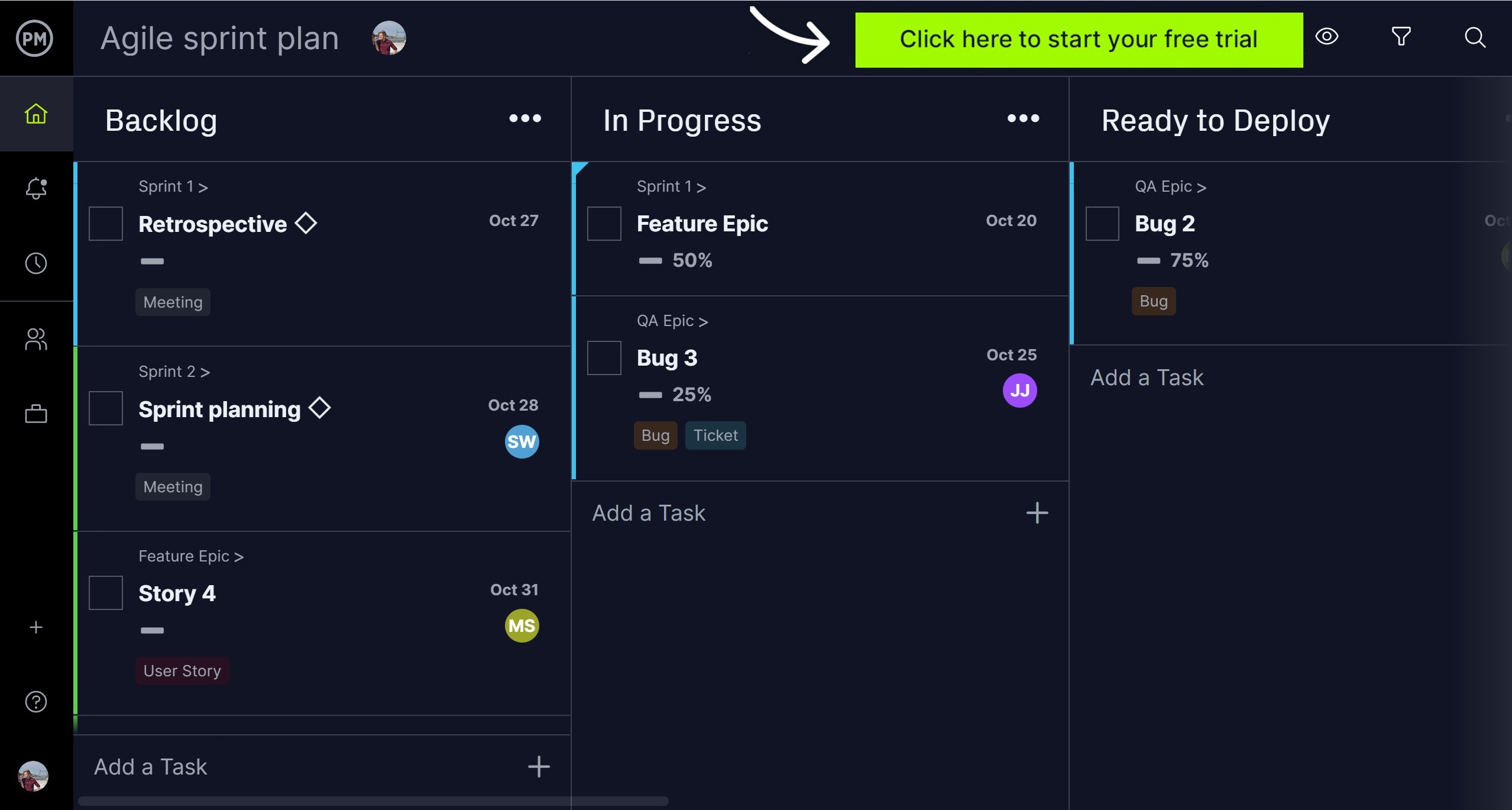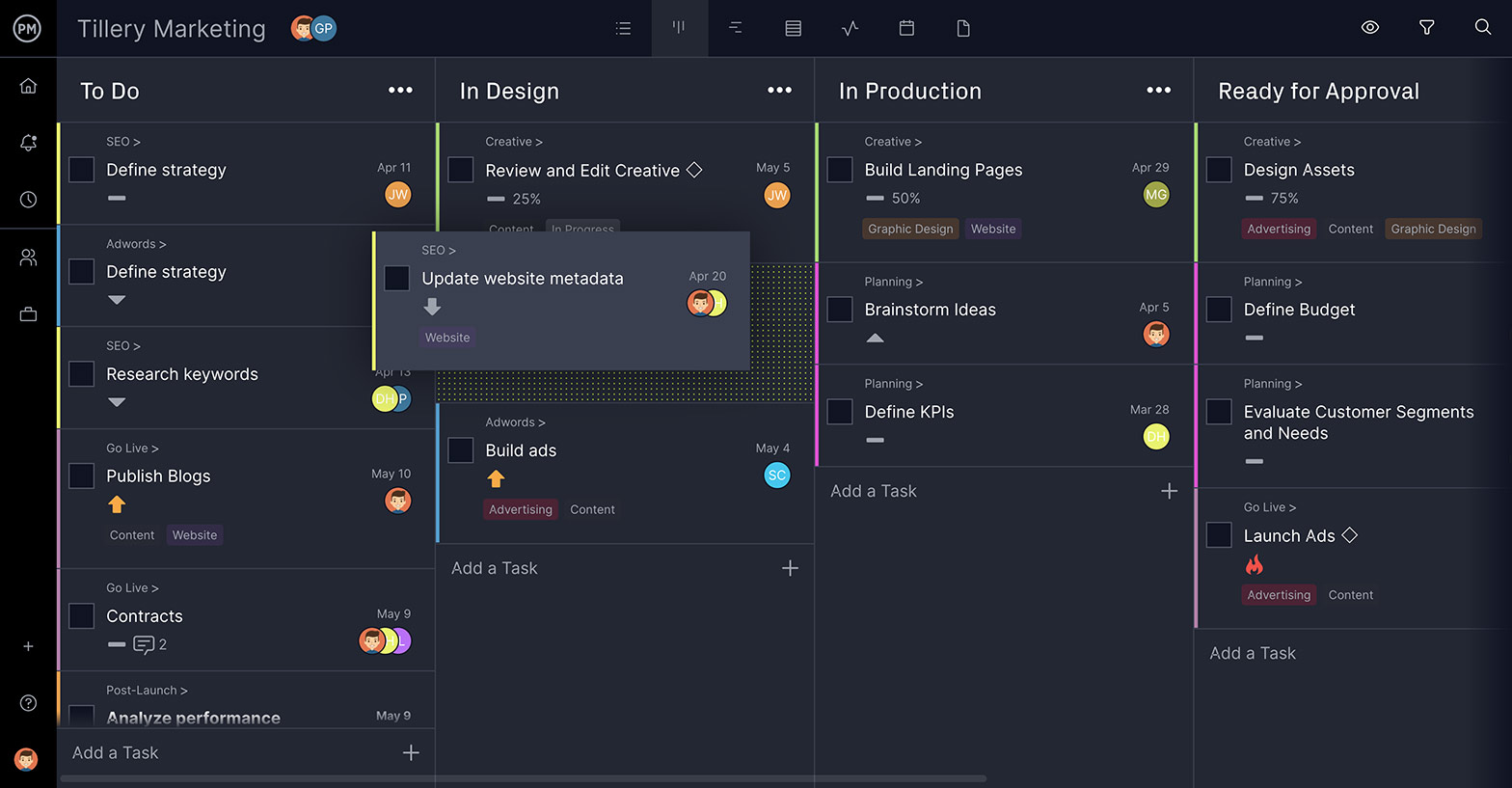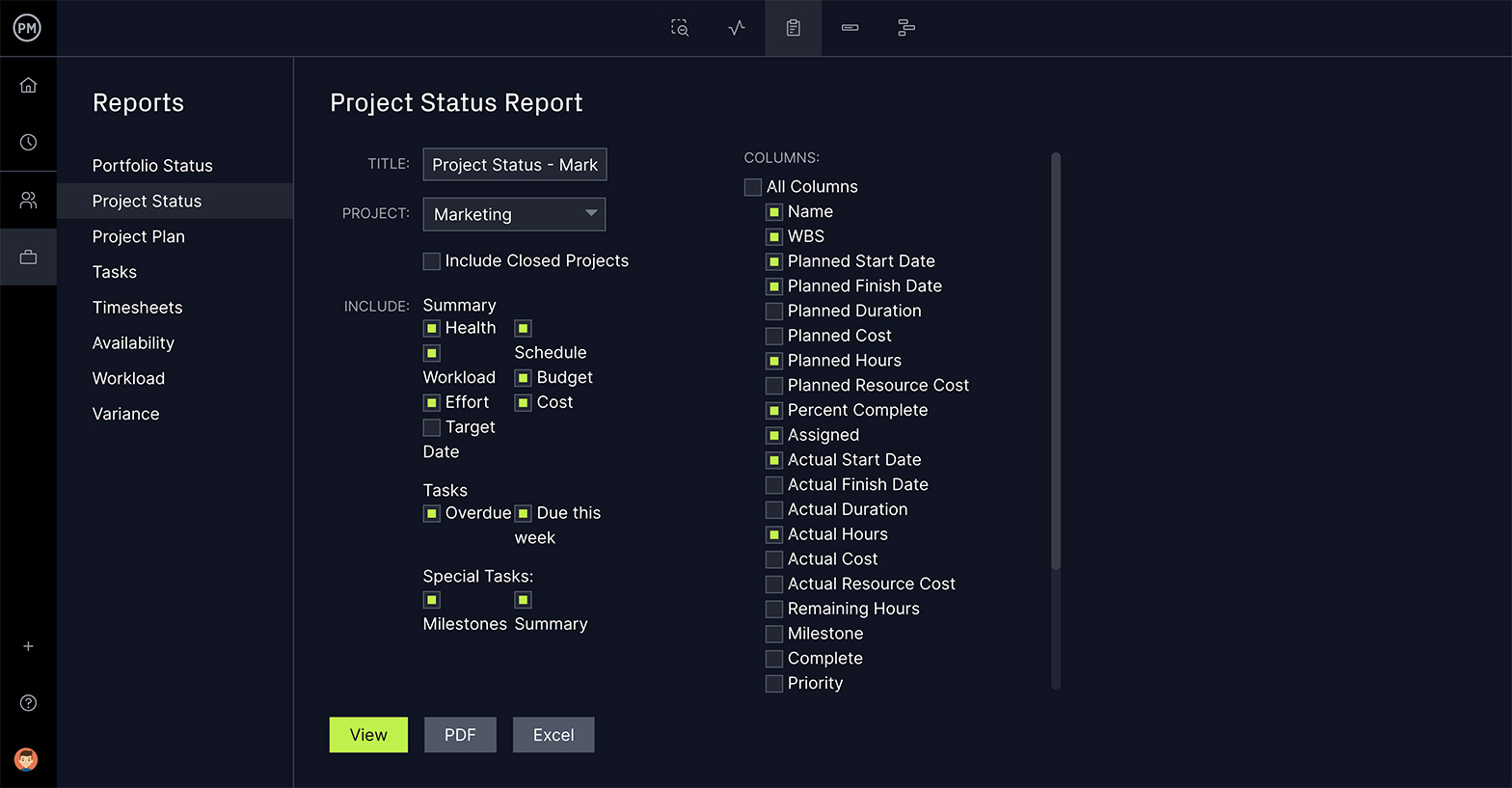Project management is the art of solutions. You have a project, and it has the means to complete it within the constraints of time, scope and cost. As rigid as some project management methodologies can appear, they’re surprisingly cooperative when combined with others to create a workable hybrid.
For example, take scrum. Scrum is a great agile framework for helping teams work more productively together. In fact, the name comes from rugby and like it, scrum is a team sport. Scrum teams learn through experience, reflective meetings and specific roles that add structure and manage work.
Then there’s kanban. It’s a visual project management system for managing work as it goes through a production cycle or process. The kanban method consists in using a kanban board to visualize workflow and manage tasks. A kanban board can help you identify bottlenecks, which can then be resolved before they block team members. It’s a cost-effective way to gain productivity.
So, here are two seemingly unrelated agile methodologies that fall under the larger umbrella of project management. One a framework and the other a system. But just like chocolate and peanut butter, when you put them together you get something not only tasty but highly effective.
What is Scrumban?
The Scrumban methodology is part of an agile framework, a hybrid of scrum and kanban. It was created as a way to transition from scrum to kanban. The hybrid combines the best features of both agile project management methodologies and is well-suited for product and agile development projects.

What the scrumban method does is take the prescriptive nature of scrum, which resides in an agile framework, and uses the process of continuous improvement that is key to kanban. This gives teams the power to continually optimize their processes.
Teams that initially adopted scrumban wanted to stop executing their work in agile sprints, and are naturally attracted to scrum boards because of their pull-based system. Thus, this hybrid of scrum and kanban was born. By extracting the best of both agile methodologies, scrumban teams are more flexible in their ability to adapt to changes as they arise.
Scrumban Methodology: How Scrumban Combines Scrum and Kanban
The essence of scrumban is its combination of the defined structure of scrum with the fluid workflows of kanban. We’ll outline which elements of each exist in a typical scrumban environment.
Scrumban vs Scrum
Scrumban takes from scrum such decision-making as figuring out how much work can be done in a sprint and prioritizing what is the most important task to work on next.
But this work is not done until the necessary analysis is completed, which falls under the scrum definition of ready. This ready list is used as a bridge to organize tasks between the product backlog and the doing stage.
Scrumban vs Kanban
Kanban comes into scrumban to improve the project management process and visualize the workflow. First, scrumban uses kanban boards, which are often referred to as scrumban boards when used in a scrumban methodology.
Scrumban teams also use kanban processes, such as the pull system, which provides a continuous workflow. That is, tasks are pulled into the doing column when the team is ready to execute.
The Kanban method also helps scrumban by limiting how many items are in progress at any time, which increases focus on specific tasks and helps productivity. Unlike scrum, in kanban individual roles are not clearly defined, so this adds some flexibility, too.
Just-in-time analysis is inherited from kanban, which creates shorter lead times, instead of batch-processing for iteration planning estimates, which is used in scrum. Additionally, weaknesses in processes can be exposed through the use of process buffers and flow diagrams. Those scrumban tools help identify areas that can be improved and reduce bottlenecks.
Advantages of the Scrumban Methodology
Time-Saving
One of the advantages of the scrumban process is that it saves time. That’s because there’s no sprint planning every couple of weeks. Plans are only made when there’s a demand for the team to make them, such as when the work in progress falls below a predefined threshold.
Compartmentalization
Larger projects are also ideal for the scrumban methodology. The larger the project, the more features and tasks associated with it. These deliverables are required over months if not years. Scrumban can be distributed in various buckets of time and prioritized in shorter iterations to better manage these long-term projects.
Spot Snags with a Scrumban Board
Bottlenecks are the bane of projects. They slow down work, mess with schedules and waste time and money. A scrumban board is a great way to find those bottlenecks in workflow and resolve them before they become a problem. Like kanban boards, a scrumban board allows project managers to see where the most tasks are and address the slowdown early and effectively.
Clarity
Everyone is on the same page in scrumban. Again, because of the transparency of kanban boards, all team members can see where they and the project is in terms of workflow. They update their statuses and everyone sees it.
Intuitive
Scrumban is a simple hybrid project management process that can be easily adopted. There’s no need for a scrum master or product owner. It’s a visual agile methodology and there’s only one planning meeting. The scrumban method rules are straightforward, so the learning curve is relatively flat.
Independence
This allows teams to have more of an equal footing, which helps to reduce stress in a project. Project management teams have the autonomy to choose tasks using the pull principle (a lean manufacturing technique that controls the flow of work by only moving on when the last task has been completed). Tasks are not assigned by a project manager or scrum master, and there’s no daily reporting to a project manager, which keeps teams on task.
Disadvantages of Scrumban
Though there are many advantages, there are also some deficits to using scrumban that need addressing. For one, the scrumban methodology is so new that there are no best practices to guide it. This can open the door for teams to invent their own, which may or may not be a benefit to the project.
Because teams have the freedom to choose what task they work on it can be difficult to track the effort and contribution of individual team members on the scrumban board. There are no scrum daily meetings to give project managers a snapshot of the progress. This can create a project management nightmare.
Needless to add, the one who loses control in this situation is the project manager. A project manager has control over a longer-term process, such as what to pick from a three-month bucket and the tasks to schedule for on-demand planning and their priority. But after that, it’s up to the team to decide how to handle and implement them.
How ProjectManager Helps with Scrumban
Because scrumban is a hybrid agile development framework for working on projects, the tools project managers and teams use need to share that flexibility. ProjectManager is a cloud-based project management software that can work in any project management methodology. Whether you’re managing your project in waterfall, an agile framework or a hybrid, our features are plastic to pivot with you.
We have kanban boards that have easy-to-use drag and drop cards and customizable columns that allow you to organize your work your way. Scrumban lives on the kanban board. Managers and teams can see the whole project’s workflow. Teams are given collaborative scrumban tools to work more effectively. They can comment, attach files, set priority levels, add tags and more. By using an @mention, one team member can bring in another instantly.

Reporting keeps managers tracking progress. Yes, our software removes one of the disadvantages of scrumban. There might be no daily stand-up meetings, but project managers can generate reports with one click to monitor progress on tasks, project variance, health and more. The reports can be filtered to customize them to show just the data you want.

Get ProjectManager and give your team the freedom of scrumban and project managers the tools to track and monitor their progress. We also have online Gantt charts to plan over a timeline. Timesheets keep the team’s hours logged. Resource management tools make sure resources are balanced. And our team section gives project managers a place to collect team member skills to facilitate assembling effective teams. Try ProjectManager today with this free 30-day trial.

